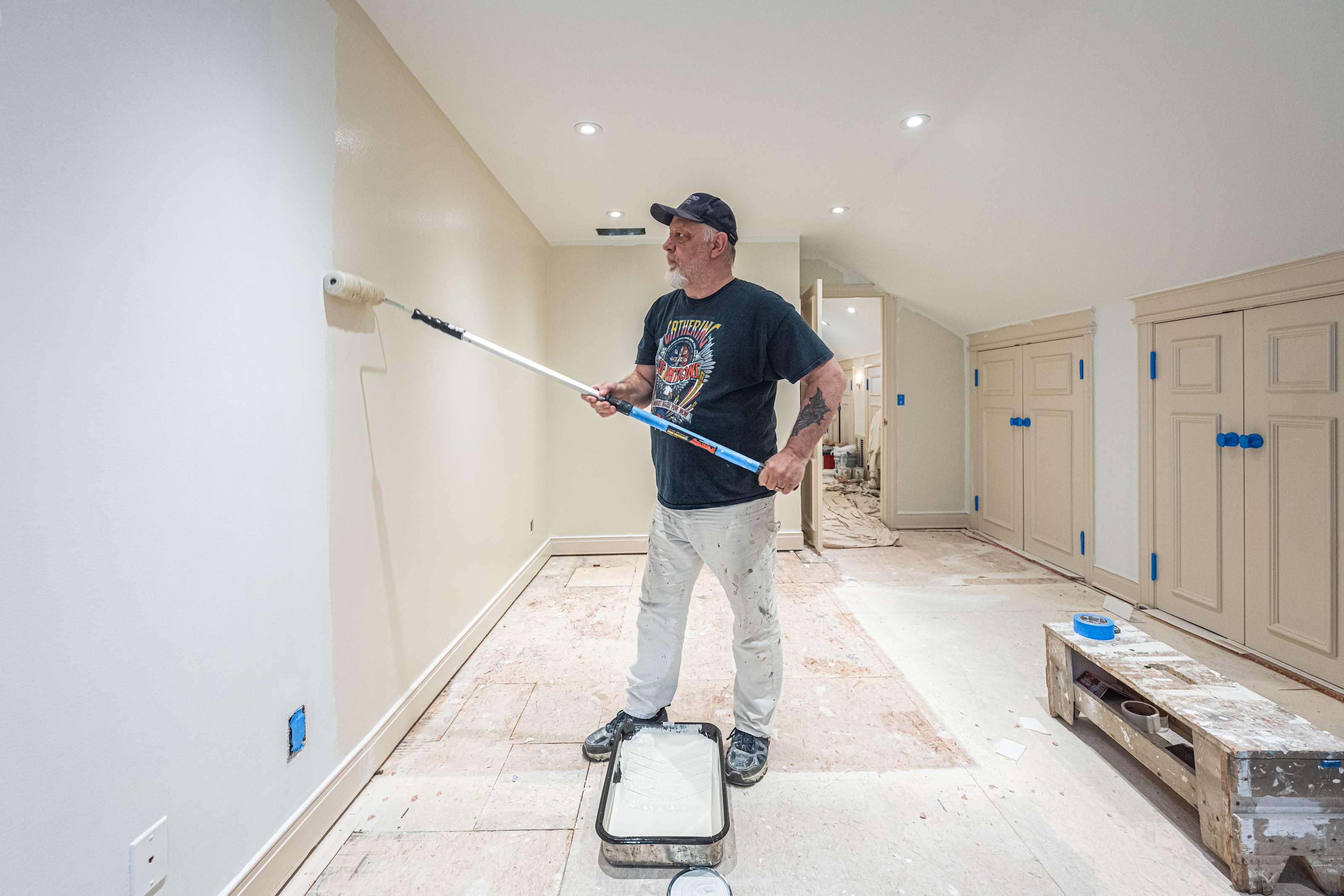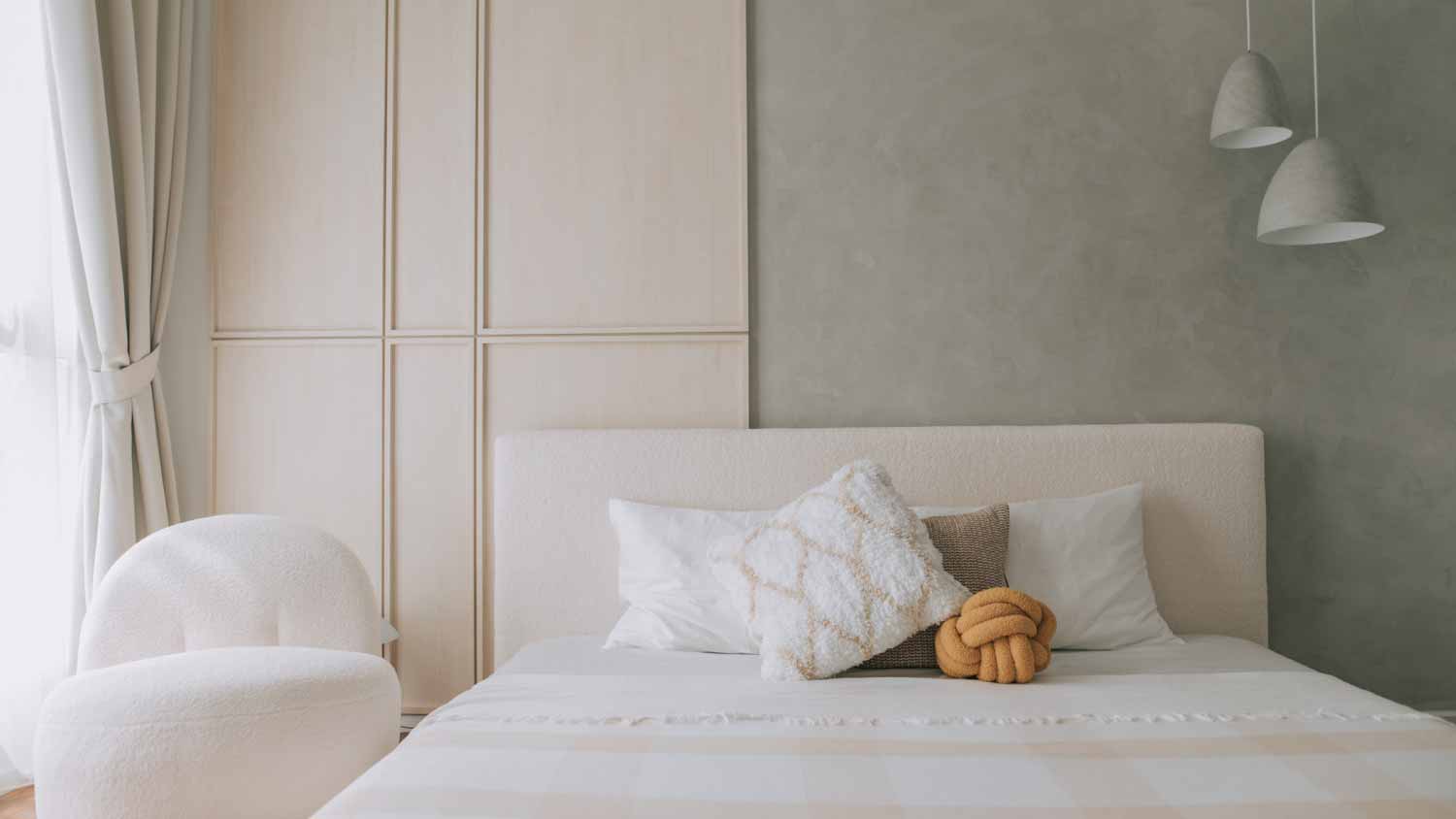
The cost to paint the interior of a house in Boston, MA depends on size, layout, type of surface, and more. Learn what factors can influence your total in this guide.
While paint sheens might seem similar, there are actually a few important differences


Eggshell paint has a flatter sheen, is more porous, and requires less prep work.
Semi-gloss paint is shinier, easier to wash, and requires more prep work.
Eggshell paint is used for walls, while semi-gloss paint is used more for trim and details.
From type to color to sheen, choosing paint can be intimidating. In addition to affecting the appearance of your wall, paint sheen also determines its durability and maintenance requirements. Here’s a breakdown of all the differences between eggshell and semi-gloss paint so you can make the right call for your project.
When choosing a paint sheen, think about the space you’re painting, how shiny you want those walls to be, and how often you’ll need to wash them. For instance, an adult’s bedroom wall doesn’t need to be as washable as say a kitchen wall would be, so eggshell would be a better choice for your bedroom, while semi-gloss will work better for a kitchen cabinet.
| Quality | Eggshell | Semi-Gloss |
|---|---|---|
| Reflectiveness | Non-reflective | Reflective |
| Color saturation | Very saturated | Not very saturated |
| Uses | Walls | Trim |
| Durability | Shows wear | Very durable |
| Washability | Less washable | More washable |

Eggshell paint falls more toward the flat end of the sheen scale and semi-gloss falls toward the glossier end of the scale.
Eggshell paint is only slightly more reflective than matte paint, while semi-gloss is almost as reflective as paint can be. Semi-gloss paint has a lot of shine, which is why it's often reserved for detail work like trim. Painting a whole, sunny room with a semi-gloss finish might be a bit distracting.
The flatter a paint is, the more saturated and richer the color will appear. Because of its flatter sheen, eggshell paint will have a more saturated color than semi-gloss. If you’re adding a bright-colored accent wall, choosing eggshell paint over semi-gloss will give you a more vibrant hue.
The surface of eggshell paint is slightly rougher than smooth, shiny semi-gloss paint. The unpolished, slightly matte finish of eggshell paint is how it gets its name—just picture the texture of an eggshell after breakfast.
Semi-gloss paint stands up to the wear and tear of daily life and shows fewer scuffs. While both types of finish can be wiped down with some soapy water, eggshell paint will take a little more scrubbing to remove dirt, which can damage the paint. The rougher surface of an eggshell finish can be more easily damaged than the relatively smooth surface of semi-gloss paint. Remember, the shinier the paint, the more durable it will be.
Smoother, glossier paint is more washable and durable, perfect for kitchens and bathrooms, while rougher, less glossy paint can be used for a calmer space or where color saturation is important. You’ll want to reserve eggshell finishes for your home’s interior because it’s susceptible to moisture and staining. But, semi-gloss tends not to be very absorbent and is a good choice for use outdoors.
Eggshell paint is versatile and less shiny, so it's a good choice for walls and larger surfaces. The shininess of semi-gloss paint could be overwhelming as a wall color, but it can be excellent for painting trim or accents.

Knowing how your paint will look once it’s applied, and how much prep you’ll need to do for a good result is important when planning your painting project or budgeting out to hire a local interior painter.
Eggshell paint is a popular choice for walls and ceilings because its non-reflective finish helps to hide imperfections like bumps and old repairs. Semi-gloss paint is reflective and any small imperfections can be highlighted by the glossier finish. If you plan to use semi-gloss paint on a larger surface, there tends to be an increased amount of prep in order to get a good result.
From average costs to expert advice, get all the answers you need to get your job done.

The cost to paint the interior of a house in Boston, MA depends on size, layout, type of surface, and more. Learn what factors can influence your total in this guide.

How much does it cost to paint a room? Learn what you’ll pay to give your space a makeover, depending on room size, paint type, the pro you hire, and more.

The cost to paint the interior of a house in Seattle, WA depends on size, layout, type of surface, and more. Learn what factors can influence your total in this guide.

When a ceiling has stains, you can follow a few steps for how to paint a water-damaged ceiling yourself—or a pro can fix the damage and paint for you, too.

Is it time to give your home a little makeover? Start with the stairs. Here's how to refinish stair railings and refresh your interior.

If your room is falling flat, learning how to texture walls will help bring dimension to your space. Get to know all the different options and how to do them yourself.